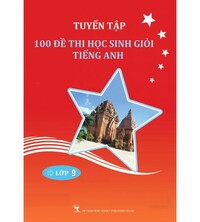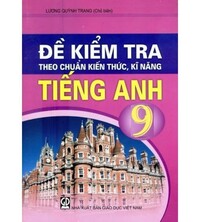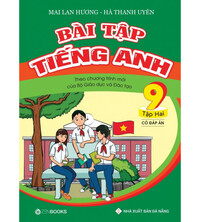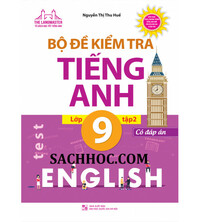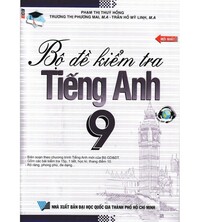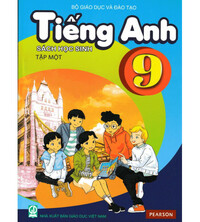Tiếng Anh 9 Unit 3 3.5 Listening and Vocabulary
1 Work in pairs. Do you know the names of these forms of entertainment? 2 3.04 Listen to a conversation between two friends discussing different forms of entertainment in the recent history of Nam. Listen and write fan dance, hat dance, lion dance, or water puppet in the blanks.
Bài 1
1 Work in pairs. Do you know the names of these forms of entertainment?
(Làm việc theo cặp. Bạn có biết tên các hình thức giải trí này không?)

Lời giải chi tiết:
I know these forms of entertainment. Photo A is a traditional musical instrument performance, photo B is a pond painting scene, and photo C is a water puppet performance.
(Tôi có biết các hình thức giải trí này. Bức ảnh A là buổi biểu diễn nhạc cụ truyền thống, bức ảnh B là cảnh vẽ tranh đông hồ còn bức ảnh C là buổi biểu diễn múa rối nước.)
Bài 2
2 3.04 Listen to a conversation between two friends discussing different forms of entertainment in the recent history of Nam. Listen and write fan dance, hat dance, lion dance, or water puppet in the blanks.
(Nghe đoạn hội thoại giữa hai người bạn thảo luận về các hình thức giải trí khác nhau trong lịch sử cận đại của Nam. Nghe và viết múa quạt, múa mũ, múa lân, múa rối nước vào chỗ trống.)
1 brings fortune.
(mang đến vận may)
2 entertains villagers.
(làm vui lòng dân làng)
3 is about historical legends.
(là về truyền thuyết lịch sử)
4 originated in open fields.
(có nguồn gốc từ các lĩnh vực mở)
5 looks like hat dance.
(trông giống như múa mũ)
6 pays homage to farmers
(tỏ lòng tôn kính với nông dân)
Bài 3
3 3.05 Listen again and complete the notes with ONE word for each blank.
(Nghe lại và hoàn thành các ghi chú với MỘT từ cho mỗi chỗ trống.)
Four Types of Traditional Vietnamese Entertainment
(Bốn loại hình giải trí truyền thống Việt Nam)
• Lion dance was performed to bring good and fortune.
(Múa lân được biểu diễn để mang lại may mắn và tài lộc.)
• Water puppetry was used to teach villagers old .
(Múa rối nước được dùng để dạy dân làng ngày xưa)
• The fan dance is similar to the dance.
(Điệu múa quạt cũng tương tự như điệu múa.)
• The hat dance pays homage to and who join in.
(Điệu nhảy mũ tỏ lòng tôn kính và những người tham gia.)
Bài 4
4 3.06 Fill in the gaps with the WordFriends from Exercise 2.
(Điền vào chỗ trống với WordFriends ở Bài tập 2.)
Tạm dịch:
historical legends: truyền thuyết lịch sử
lion dance: múa sư tử
pay homage to: bày tỏ lòng kính trọng đến
water puppet: con rối nước
1 The child loved the fire crackers and loud music of the performance at the temple.
2 The puppets appear to be moving on the water in the show.
3 Most countries have to explain the origins of their country.
4 We our ancestors when we return to our village every year.
Lời giải chi tiết:
1 The child loved the firecrackers and loud music of the lion dance performance at the temple.
(Cậu bé rất thích tiếng pháo và tiếng nhạc ầm ĩ của màn múa lân ở chùa.)
2 The puppets appear to be moving on the water in the water puppet show.
(Những con rối dường như đang di chuyển trên mặt nước trong chương trình múa rối nước.)
3 Most countries have historical legends to explain the origins of their country.
(Hầu hết các quốc gia đều có những truyền thuyết lịch sử để giải thích về nguồn gốc của đất nước mình.)
4 We pay homage to our ancestors when we return to our village every year.
(Chúng tôi tỏ lòng tôn kính tổ tiên khi trở về làng hàng năm.)
Bài 5
5 Work in pairs. Ask and answer about one form of entertainment.
(Làm việc theo cặp. Hỏi và trả lời về một hình thức giải trí.)
● What is it?
(Nó là gì?)
● When was it first introduced?
(Nó được giới thiệu lần đầu tiên khi nào?)
● What changes have occurred to this form of entertainment in the last 50 years?
(Những thay đổi nào đã xảy ra với hình thức giải trí này trong 50 năm qua?)
● Do you want to play / see / watch / listen to it? Why (not)?
(Bạn có muốn chơi/xem/nghe nó không? Tại sao hoặc tại sao không)?
Tạm dịch:
water puppet: con rối nước
hat dance: múa mũ
fan dance: múa quạt
lion dance: múa sư tử
Lời giải chi tiết:
A: What is it?
(Nó là gì?)
B: It's water puppetry, a traditional Vietnamese art form where puppets are manipulated on the surface of water to create performances.
(Đó là con rối nước, một hình thức nghệ thuật truyền thống của Việt Nam, trong đó các con rối được điều khiển trên mặt nước để tạo ra các buổi biểu diễn.)
A: When was it first introduced?
(Nó được giới thiệu lần đầu tiên khi nào?)
B: Water puppetry has a long history, dating back to the 11th century in the Red River Delta of Vietnam during the Ly dynasty.
(Nghệ thuật con rối nước có một lịch sử lâu dài, bắt đầu từ thế kỷ 11 tại sông Hồng của Việt Nam trong thời đại triều Lý.)
A: What changes have occurred to this form of entertainment in the last 50 years?
(Những thay đổi nào đã xảy ra với hình thức giải trí này trong 50 năm qua?)
B: In recent decades, water puppetry has modernized with the incorporation of new technologies, improved puppetry techniques, and expanded themes to attract a wider audience.
(Trong vài thập kỷ gần đây, nghệ thuật con rối nước đã hiện đại hóa với sự tích hợp của công nghệ mới, cải tiến kỹ thuật làm rối, và mở rộng chủ đề để thu hút đông đảo khán giả hơn.)
A: Do you want to see it? Why?
(Bạn có muốn xem không? Tại sao?)
B: Absolutely, I would love to experience the unique blend of traditional art and technological advancements. It's a captivating form of entertainment.
(Chắc chắn, tôi muốn trải nghiệm sự kết hợp độc đáo giữa nghệ thuật truyền thống và sự tiến bộ công nghệ. Đó là một hình thức giải trí rất cuốn hút.)
Search google: "từ khóa + timdapan.com" Ví dụ: "Tiếng Anh 9 Unit 3 3.5 Listening and Vocabulary timdapan.com"
